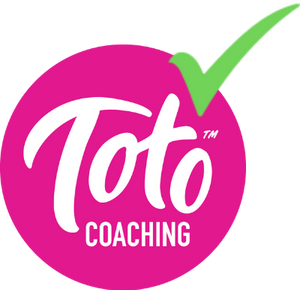Watch this video or read the article below
![]()
Transcript
Black hat SEO techniques are unethical and they violate search engine’s terms of services and guidelines.
By manipulating these algorithms, it can lead to greater visibility, okay, within the SERP, within the search engine results page for the short term. But in the long term, this can be detrimental to website ranking, and it may result in a penalty, or even worse, a search engine ban. Seriously. Other examples of black hat techniques include, you know, keyword stuffing and duplicate content.
Keyword stuffing is when you enter keywords into pages or titles or other places by placing keywords in an unnatural way. I’m sure you’ve seen these websites. They don’t read well. They don’t really make sense. Duplicate content. This is exactly what it means. It means you copy the text from another website.
Do not do this. This is plagiarism. module. But if you have thought maybe you could copy text from another website, just get that idea out of your head right now.
Okay, so that’s black hat. That’s trying to cheat your way to the top. Even if it works, it doesn’t work for long before Google catches on and the consequences can be terrible for your business.
So what’s the toto way? We want you to have the best practices that will set you up for lasting results. Done right? Done the way Google likes. This means using white hat techniques. So white hat techniques are SEO techniques that are ethical and adhere to search engine’s terms of services and guidelines.
Google looks favorably on a website when you add relevant, high quality links to other websites, as well as quality. Keyword rich content, or text for another word. It’s not hard to do. And here are the most important white hat things you want to concentrate on when you’re working on your website. Unique quality content.
Relevant keywords. High authority backlinks. Internal links to other content on your website. Structured data markup. And page speed.
Let’s go over this a little more in detail
Building a website is no small feat for a new entrepreneur or small business owner. You pour your heart into creating useful, high-quality content and an exceptional user experience. But all that hard work means nothing if customers can’t find your site.
This is where search engine optimization (SEO) comes into play. SEO is what elevates your site in search engine results pages (SERPs), putting it front of your ideal audience. Implement SEO well, and you could find yourself at the very top of Google.
But SEO has a dark side too. There are shady, manipulative tactics that can earn you a temporary boost—before you eventually get slapped down by Google’s stringent rules.
So what should well-meaning business owners do? Follow these SEO “dos and don’ts” to safely optimize your site and content:
The Don’ts: Avoid Black Hat SEO Techniques at All Costs
Black hat refers to unethical, deceptive SEO tactics that break search engine rules. While they may skyrocket your rankings overnight, they’ll cause long term problems.These dubious short-term gains come at an eventual very steep cost – like completely getting banned from search engines.

Let’s explore three prime examples of what not to do.
Keyword Stuffing: Cramming Content With Keywords
Have you ever read a web page full of awkwardly jammed sentences like: “Welcome to our Mexican restaurant restaurant in San Diego, the best Mexican food restaurant serving tacos, burritos, and the best Mexican restaurant quesadillas.”
It sounds like that because someone excessively stuffed keyword phrases in unnaturally. Search engines see right through these shenanigans. Don’t do it.
Hidden Content: Tricking The Eye
In the early 2000s, some site owners sneakily hid keyword-rich content in tiny font sizes or text colors blending seamlessly with backgrounds. Since search engines index all text regardless of visual presentation, these shady sites enjoyed ill-gotten ranking gains.
But this deceptive trickery is no longer accepted in 2024’s more knowledgeable, moral internet environment. Simply reject it.

Plagiarized Content
Under immense pressure to rapidly create high volumes of blog content, some desperate site owners turned to simply copying others’ content work.
Not only is this content theft flat-out wrong, but duplicate content also dilutes your rankings power. Write genuinely useful content instead of stealing it.
The Dos: Optimize Ethically With White Hat SEO
White hat refers to the ethical, thoughtful SEO tactics that create lasting success by playing by the rules. Let’s explore tips for safely optimizing your site.
Provide Unique, High Quality Content
At its core, SEO is about content. The very best way to ethically optimize your site is creating many pages and blog posts packed with truly unique, engaging, high value content. Aim for long, comprehensive articles over 300 words answering questions for your audience.
Not only will Google love this content, but your audience will too.
Strategically Use Relevant Key Phrases
Naturally work targeted key phrases into your content, striking a balance between optimization and readability. These should be words and short phrases (ideally between 2-5 words) that you know users are likely searching for.
Let’s say you run an Italian restaurant. Users might search phrases like:
– Best Italian restaurants in San Diego
– Romantic Italian restaurants San Diego
– Top rated Italian food San Diego
By including such phrases judiciously around 8-15 times per 1500-word post, you’ll catch the eyes of search engines and users alike.
Earn Links From Trusted Industry Sites
In the SEO game, backlinks are everything. These are links from other websites pointing back to pages on your website. It’s like a vote of confidence. The more links you have, especially from authoritative sites related to your niche, the more credibility and rankings juice you’ll accrue.
Relevant magazine write-ups, local newspaper reviews of your business, and mentions from vendors are all positive signals to search engines that you’re a legit player in your space.
Interlink Related Content
Internal links point from one page on your domain to another, forming a web that search engines can crawl through. Link relevant older content when creating new posts to showcase more of your expertise.
For example, in a blog post on “Vegetarian Pizza Topping Ideas,” link back to your “Most Popular Vegan Pizza Crusts” article. The search engines will pick up on the fact that you have breadth and depth of pizza content.
Include Structured Data Markup
Markup refers to snippets of code you can add to your site to help search engines better digest specifics like locations, hours, prices, owners. With markup, Google can include helpful information directly in the search snippet for your site.
Schema markup for an e-commerce site may include product availability, shipping rates, sizes and colors. For a local pizza shop, markup may highlight the address, map, phone number, menu links, and open hours.
Optimize Site Speed
Did you know that nearly half of web users expect a site to load in under two seconds? And Google prefers speedy sites too, making page speed a factor in rankings.
Ensure your web host provides ample bandwidth for traffic spikes and test site performance regularly. Compress images, remove unnecessary plugins, and optimize code to sustain fast load times.
The Long Term Wins Out
Building an SEO-optimized website isn’t a one and done task, but rather an always evolving process that takes patience and perseverance. But brands that play by the rules are richly rewarded by forging lasting bonds with customers.
So leave dodgy black hat tactics behind, and instead dedicate your energy to understanding your customers and providing immense value through world-class content and experiences. That’s the white hat path to search engine success.
This is the Toto way.


Former Web Development Agency Owner
Founder of Toto Coaching
Founder of Toto SEO
Jennifer DeRosa
Jennifer is the author of "Building DIY Websites for Dummies," a new addition to the renowned "for dummies" series.
She is also the visionary behind Toto SEO and Toto Coaching. As the founder of Toto SEO, she specializes in offering SEO solutions tailored for small businesses. Through Toto Coaching, she provides an interactive online course, complete with weekly coaching sessions, empowering small businesses and entrepreneurs to craft websites that not only presell their offerings but also foster trust among their clientele.
Jennifer's thirst for knowledge recently led her to complete a program on No Code Artificial Intelligence and Machine Learning at the prestigious MIT University.
Before her current ventures, Jennifer was the driving force behind TechCare, a web development agency she founded and led from 2001 to 2021, when she had a successful Exit.
Her career also includes consulting roles with industry giants such as Mercedes Benz Credit Corporation, US Surgical, GTE, GE Capital, Unilever, and Calvin Klein.
She is a frequent speaker for WordPress Meetups, SCORE, and others.
Are You Searching the Internet for Help Building Your Website or Making it Better?
We are here to help you!!
Check out the entire DIY Website Building Course
where we walk you through building a website
from Start to Finish!
What are you waiting for? Let's get your website built!!
